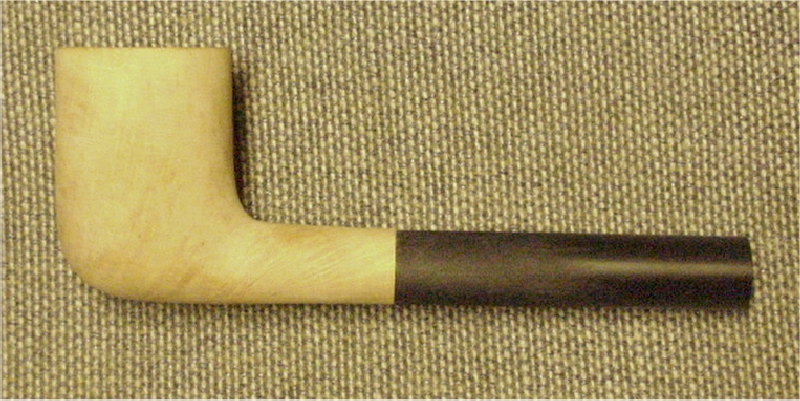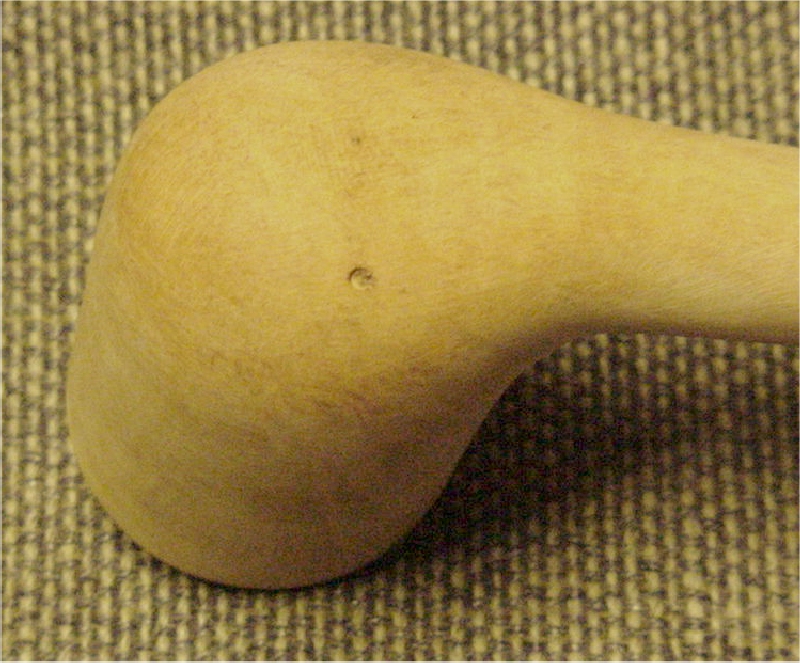Page 1 of 1
Repairing spots and flaws?
Posted: Sun Sep 03, 2006 6:06 pm
by Heinz_D
I'm just working on an customer giant billiard - my first customer pipe! The shape is nearly ready and looks like this:

Then happened what had to and I got this spot/hole at the bottom of the bowl:

My question is, if ther is any chance to repair it without grinding off too much material!? What would you do? Filling the hole with grinding dust, grinding it away or just take another plateau to begin again?
I would suggest to use grinding dust from this block, superglue and fill it into the hole... The problem is, that the customer wants to get a unstained, natural finish on this pipe!
Posted: Sun Sep 03, 2006 8:47 pm
by MikeStanley
IMHO, a fill of dust and epoxy will look horrid. How deep does the flaw go?.......thats the $64.000.00 question. I would certainly try removing the flaw before moving on to another piece of briar.
Mike Stanley
Posted: Sun Sep 03, 2006 9:22 pm
by JSPipes
I'd leave it alone. Briar is full of flaws and sandpits, as are all natural products. They add character to the piece and remind us that perfection is a worthy goal, but will never be achieved.
Joel
Posted: Sun Sep 03, 2006 9:50 pm
by bvartist
I'm with Joel, I'd leave it alone. Most customers aren't bothered by a small flaw, as long as the pipe isn't sold as flawless. The flaw is on the bottom of the bowl so will not be very visible anyway. If you customer doesn't like it, then you can deal with the flaw. Just my opinion.
David
Posted: Sun Sep 03, 2006 11:23 pm
by KurtHuhn
Rusticate or sandblast. That's what most pipe makers do.
Posted: Sun Sep 03, 2006 11:50 pm
by ckr
How much he is paying would bear impact on the decision.
That aside, if it was my first customer and he wanted a smooth finish I would just smoke that one myself and start another with some hopes that more business resulted.
Posted: Mon Sep 04, 2006 9:07 am
by marks
The first thing I would do is to find the bottom of the flaw and determine how close to the chamber it is. If it is too close to the chamber, making a very thin wall, you may risk a burnout on this pipe, no matter what you end up doing with it.
If you have an acceptable wall thickness, I second Kurt's recommendation. If your customer does not want a rusticated or sandblasted pipe, I recommend trying again. You can always sell this one to someone else, or enjoy it for yourself.
Posted: Mon Sep 04, 2006 10:23 am
by RadDavis
This is one of the hazards of commissioned orders. Sometimes it takes several tries to get what the customer wants.
Especially if they want a smooth natural finish.
Rad
Posted: Mon Sep 04, 2006 10:59 am
by Heinz_D
Thank you guys,
I just got an answer from my customer: No repair, no blasting or rustication, but I'm allowed to change the shape!

The spot is about 2 mm deep and the wall at this point is actually 9 mm - so perhaps I can save this one...
Posted: Mon Sep 04, 2006 1:39 pm
by JSPipes
Be careful changing the shape! It's very easy to remove material by chasing out a flaw and go too far and end up with a lump of briar.
If you choose to go that route, do it slowly and carefully.
If I were happy with the shape, I'd just leave it alone. It's usually not worth chasing those out.
Posted: Fri Sep 08, 2006 10:09 am
by LexKY_Pipe
Unless your charging $300-400 for the pipe, I'd leave it alone. Many customers understand that small flaws in wood are expected. Do not fill it though.
Posted: Sun Oct 08, 2006 2:21 am
by Smitty
Unless I missed it posted elsewhere...how did it turn out? I would like to see a pic of your first sale.
Posted: Mon Oct 09, 2006 5:47 pm
by Heinz_D
Smitty wrote:Unless I missed it posted elsewhere...how did it turn out? I would like to see a pic of your first sale.
I've posted the 2nd attemp here:
http://www.pipemakersforum.com/modules. ... pic&t=1996
The pipe was not really sold, but was given in exchange to another estate pipe I was searching for...

Posted: Tue Oct 10, 2006 10:18 pm
by LexKY_Pipe
It turned out quite nicely.



